Taxodium distichum (L.) Rich.
Swamp cypress or Bald cypress (in USA)
The tree tag number relates to the black tree-maintenance tags, usually fixed on the trunk, 2 to 3m above ground level.
There are not many conifers that are deciduous: that drop all their needles in winter. The swamp cypress, the larches (Larix species) and the dawn redwood are the most usually seen. Dawn redwood is superficially similar to swamp cypress. However, swamp cypress lacks the dramatic conical shape of dawn redwood and has a much more graceful spreading shape. The Botanic Gardens specimen is still young, but its shape is already distinct from dawn redwood. The leaves are also slightly different: the swamp cypress leaves tapering uniformly to a point, where the dawn redwood leaves remain parallel almost to the tip then narrow in sharply to a point. A distinctive and unique feature of swamp cypress is the development of aerial roots in older plants. These structures, pneumatophores, (sometimes called ‘knees’), rise up from the ground around the trunk allowing the tree roots to absorb oxygen from the air and to trap sediment. This enables the tree to live in waterlogged soils and swamps. However, the swamp cypress is not restricted to swamps and grows well in dry soils.
This tree planted in memory of Stan Beesley (2026-2005) by his friends in the Belfast Naturalists’ Field Club.
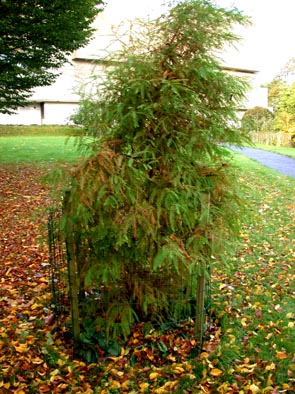
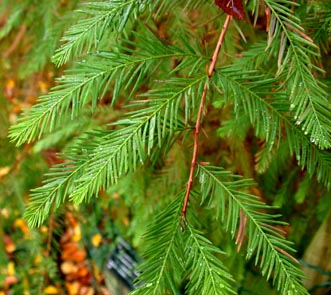
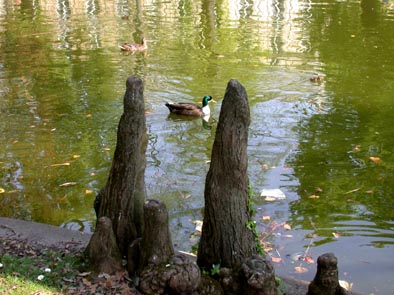
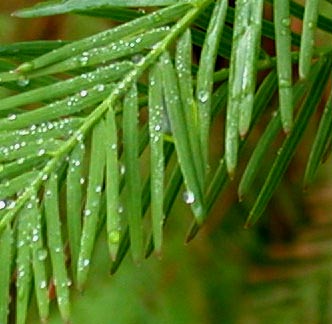
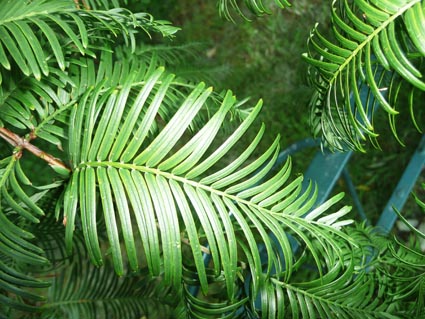
Photos taken in Belfast Botanic Gardens in 2009. Copyright: Friends of Belfast Botanic Gardens.
